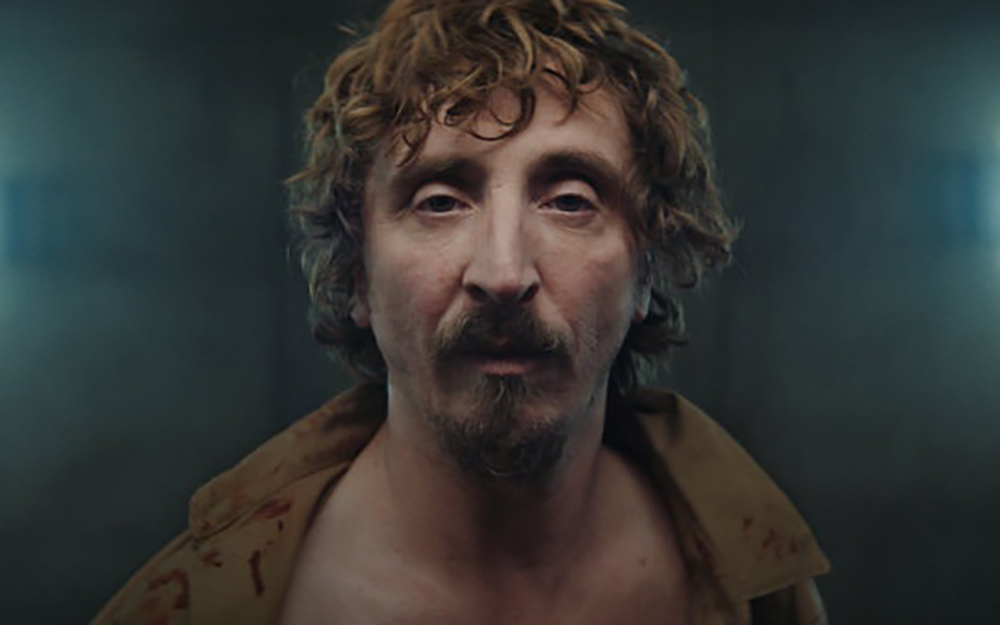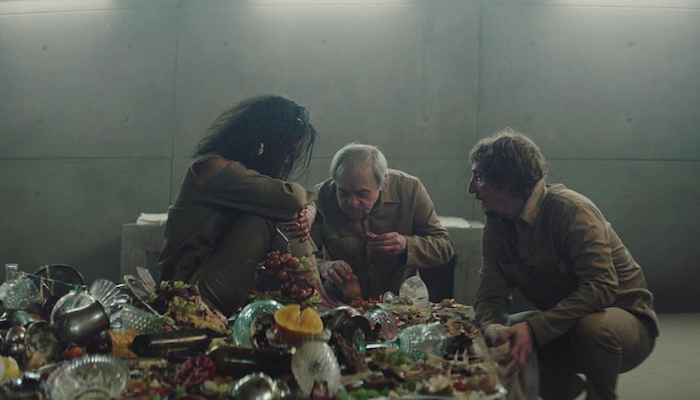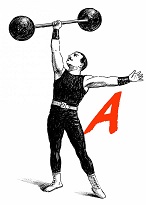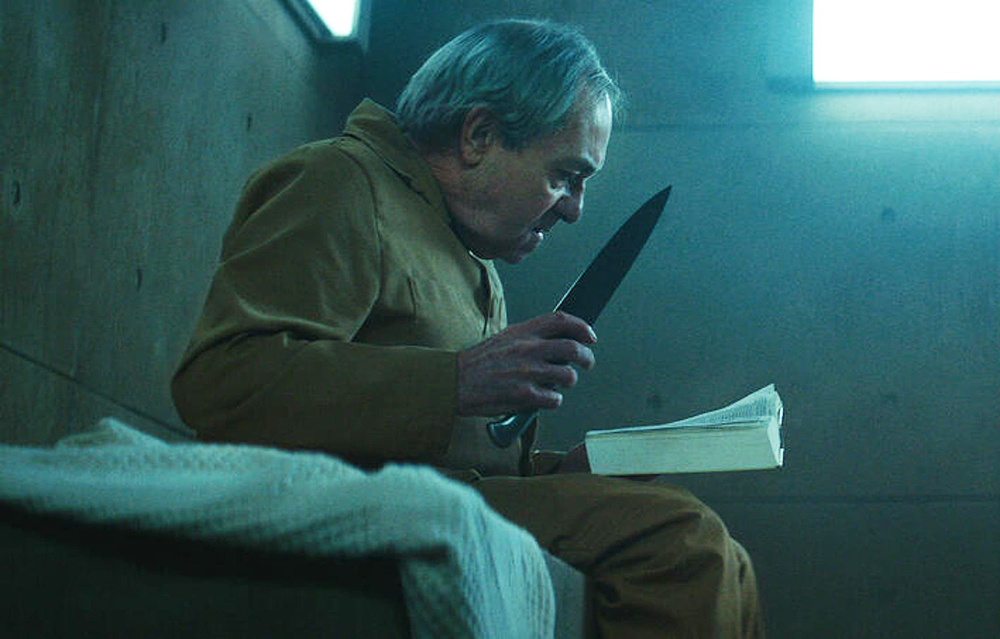Directed by Spanish filmmaker Galder Gaztelu-Urrutia, “The Platform” (“El hoyo,” original title) follows the character Goreng, as he does everything in his power to survive life in the “Vertical Self-Management Center,” a prison-like, dystopian type building in which food is scarce and survival is doubtful. The entirety of this film takes place in a platform building. The viewer gets the sense that there is no real purpose for the building, that there is a platform that floats down from floor to floor, stopping to deliver food to each floor. This is a facility which can hold people, like Goreng who enter willingly. He has chosen to remain there for six months to receive his diploma. The management center also holds criminals such as Goreng’s cellmate, Trimagasi, who is forced to spend a year incarcerated for manslaughter.
The building is a tower-like structure that has a kitchen on the top floor. From there, a massive tray of food placed on a floating platform is delivered to the inmates on the floors below. The top floor is floor one and the floors following descend as low as three hundred thirty three floors. As the platform falls between each floor, more of the food is taken, leaving nothing but scraps for any floor past sixty. The film follows Goreng as he does everything in his power to survive the horror of murder, cruelty, and cannibalism that is The Platform.
Each cell in the tower is marked with a number that coordinates with the status of that floor, and it determines how much food each inmate will receive. Each floor has a minimalistic prison design, with no windows and only a sink, toilet, and beds for each prisoner. In the center of each floor is a giant hole in the shape of a rectangle, through which the floating platform falls and rises and the top floor supplies the food source for everyone in the building. The kitchen is very meticulous with food preparation, which is a stark contrast to the manner the food will be savagely devoured at each floor as the platform descends.

As the film opens, we see the main character, Goreng, wake up visibly confused as to where he is. Looking across the room, he sees his cellmate, a short and fat older man named Trimagasi, who has accepted the idea of The Platform. Goreng learns that the platform contains food for the entire tower and rotates downward once a day; and, when that time comes, inmates eat as much food as possible. Goreng is initially skeptical of the platform, afraid of becoming a selfish and cold man like Trimagasi. As the story evolves, we see Goreng attempt to maintain his moral character; but, eventually he figures out that he must do everything in his power to survive.
The film is shot beautifully. One of the things I admire that cinematographer Jon D. Domínguez does in “The Platform” is the use of shading and colors. On the upper floors, where there is a surplus of food, the cells are a lighter color, almost as if the sun is shining in. This is regardless of the fact that we know every floor is exactly the same as all the others. As the floors descend, each room gets shadier and darker, with some floors having blood on the walls and human remains on the floor. This is a portrayal of what people are capable of when deprived of food. In the kitchen on the top floor, everything is bright and cheerful. The workers sport luxurious uniforms, and the environment is clean. It is interesting that while the kitchen workers and the chef prepare wonderful food, including some of the most delicious Italian cuisine, the people who will indulge in it are viewed as savages, almost sub-human. The cinematography in Galder Gaztelu-Urrutia’s film is truly astounding.
The performances by Ivan Massagué and Zorion Eguileor who play Goreng and Trimagasi respectively are incredible. The relationship between the two characters clearly starts off as strained, since the pair are complete opposites: one is a student who is trying to receive his diploma and one is a felon convicted for manslaughter. But, as Goreng begins to slowly accept his fate of being trapped in the tower, he begins to act like his fellow cellmate. He eats as much of the food as possible, forgets any sense of etiquette, and slowly loses his sanity.

Another character who is introduced is Imoguiri, an administration official who originally interviewed Goreng and later enters The Platform. She is horrified at the conditions in the tower, and her character clearly demonstrates this. Naïve as Goreng once was, Imoguiri believes that change can happen with just a little bit of compassion. “The Platform” explores the idea of the human condition and how people behave while enduring the most horrible conditions imaginable. It seems that everyone in this film, with the exception of a few select characters, has given up all sense of morality and only thinks about themselves.
When watching the film, I was not overtly aware of the soundtrack, since following the subtitles required most of my concentration. After re-watching it and purposely listening to the soundtrack, I enjoyed it. The music is very ominous, reflecting the plot very well.
The editing is very well done, with every shot fined tuned to display the meaning behind it. One of my favorite scenes in the film is a montage of Goreng and Trimagasi finally beginning to bond. As the two laugh, stuff their faces with food, and get to know each other, we the audience see Goreng transforming into an exact image of Trimagasi. This is just one example of the excellent editing in “The Platform.”
I highly recommend this movie. Easily available on Netflix, “The Platform” is just a small example of how human beings survive when faced with the worst conditions. If you are planning to watch the film, which I suggest you do, watch the version in Spanish. Even though you, the viewer, are going to have to use subtitles (assuming you don’t speak Spanish), the original is more raw and authentic, pulling you even further into the story.



2 Comments
Love this movie, you encapsulated the greatness of it really well. If someone wasn’t going to do a review of it soon, I would, but I’m glad you beat me to it.
Thank you for the kind words!